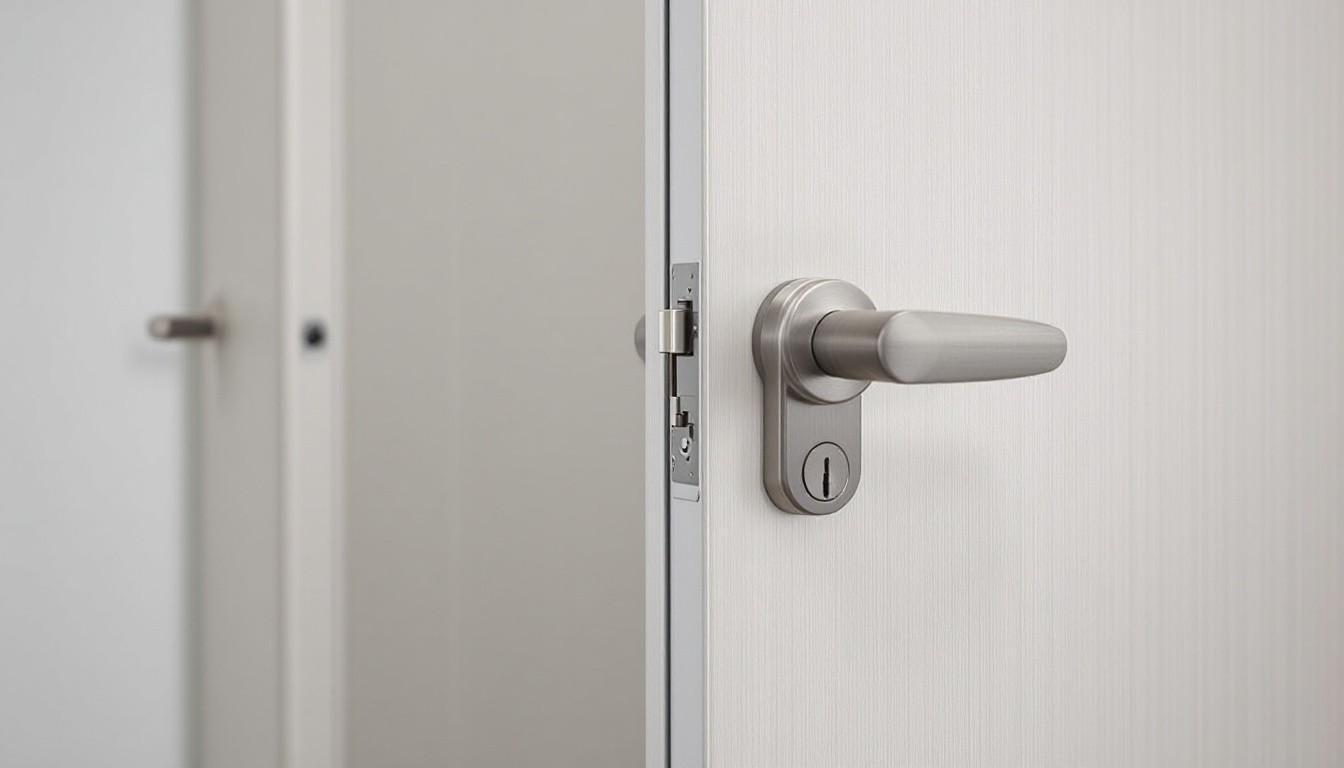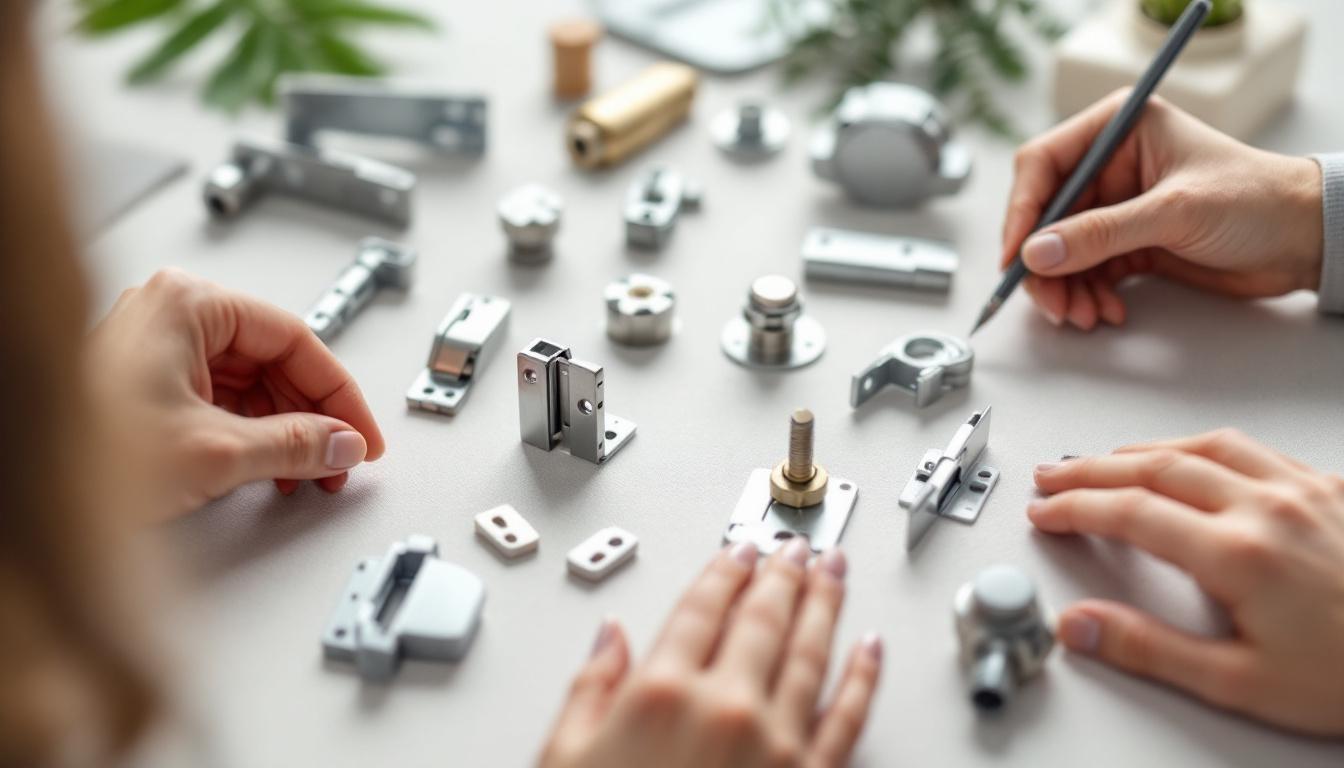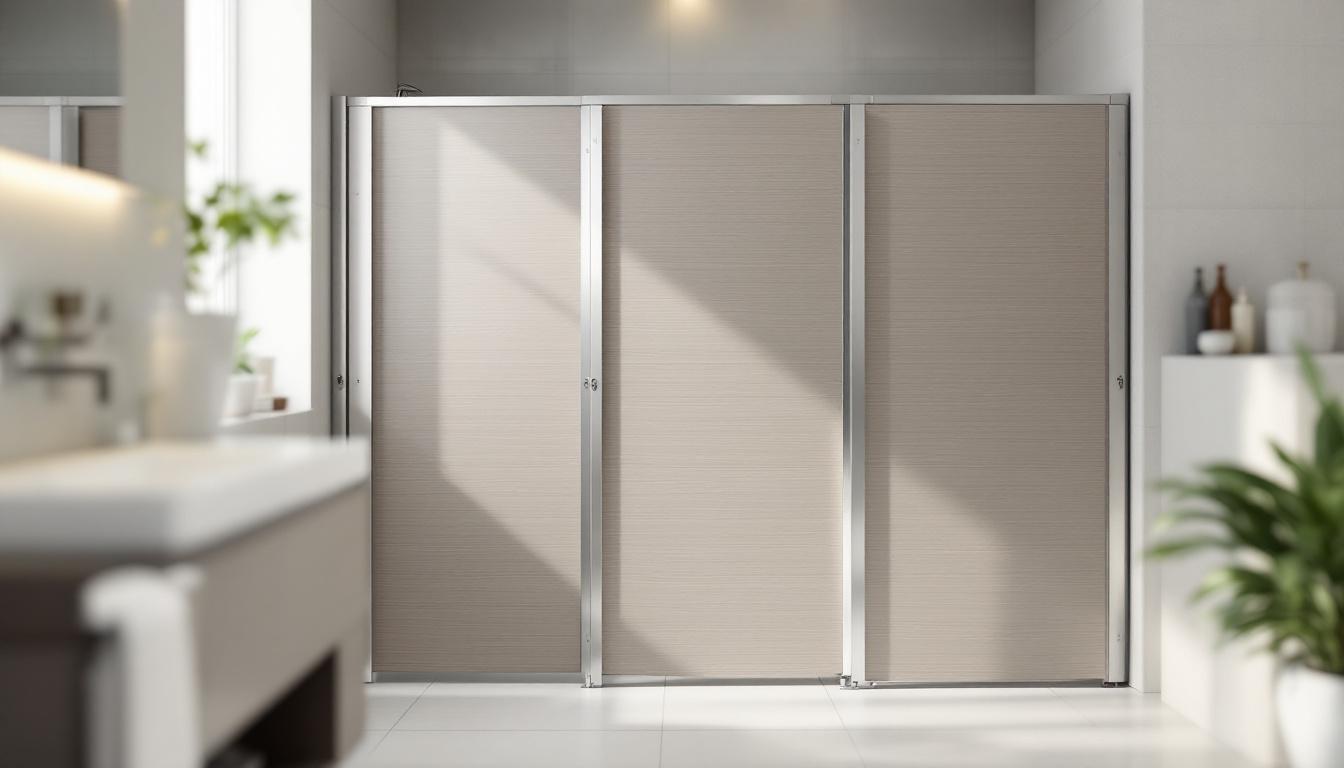Bathroom stall slide latches and toilet partition locks form the backbone of restroom privacy and security. Poor hardware choices lead to frustrated users and costly maintenance issues.
We at Partition Stalls see facilities struggle with lock failures daily. The right latch system transforms user experience while reducing long-term operational costs.
Which Latch Type Works Best for Your Stalls
Slide Bolt Latches Dominate High-Traffic Areas
Slide bolt latches handle the heaviest commercial use with their simple mechanical design. The standard 3.5-inch screw spacing makes replacement straightforward when parts wear out. Heavy-duty cast stainless steel versions withstand extensive operations in busy facilities. Surface-mounted configurations adapt to partition thicknesses from 0.75 to 1.5 inches without modification. These latches cost 40% less than magnetic alternatives while they deliver superior durability in schools and office buildings where users operate doors roughly.
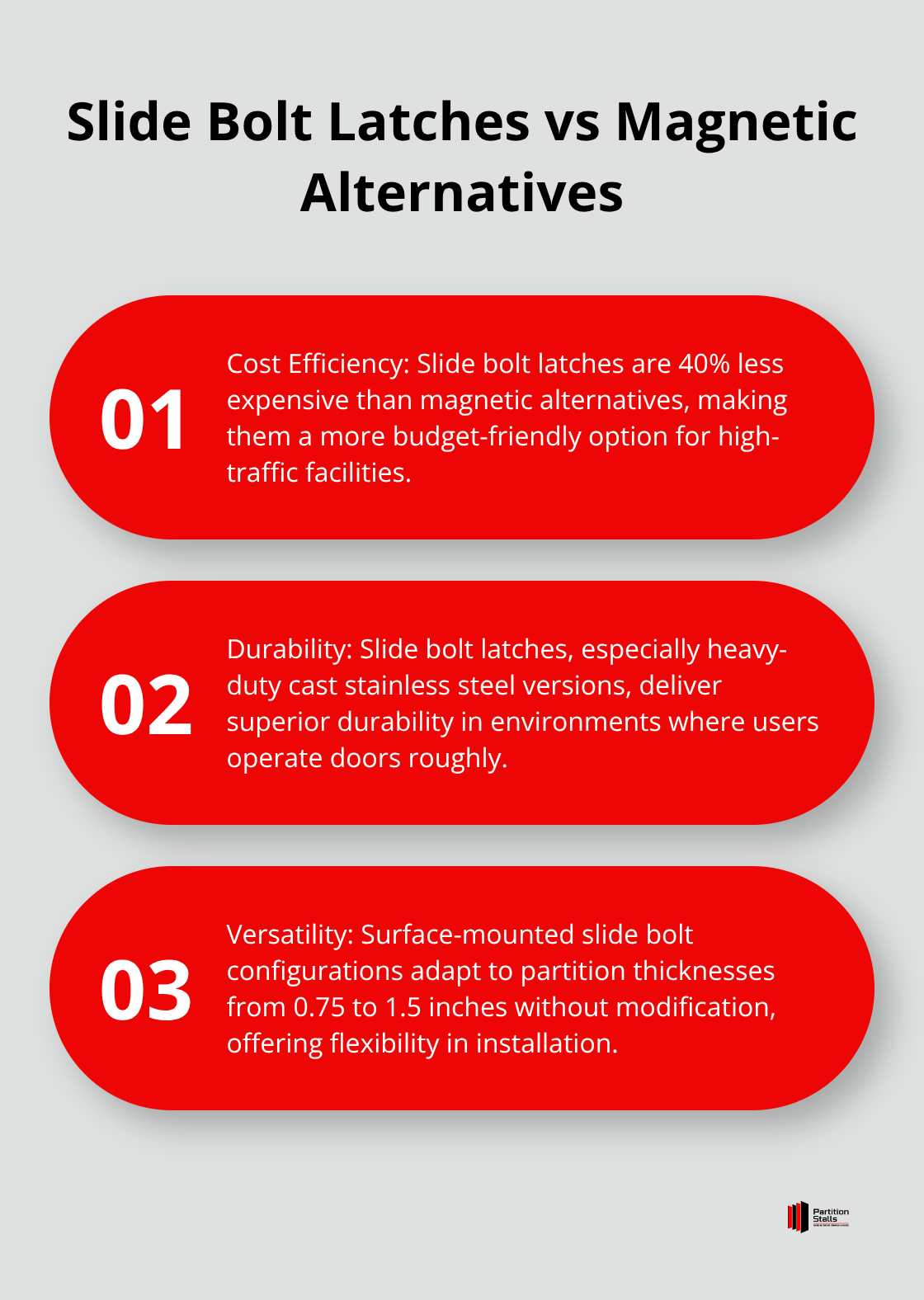
Turn Button Systems Provide Superior Privacy Control
Turn button locks with occupied indicators prevent embarrassing intrusions while they give users complete control over their privacy. The visual indicator reduces door rattling (by 60% compared to basic slide bolts), which creates quieter restroom environments. Chrome-plated zamak construction resists corrosion in humid conditions better than aluminum alternatives. Installation requires precise alignment with strike plates, but the mechanism operates smoothly for over 100,000 cycles when properly mounted. These systems work best in professional offices and upscale restaurants where user experience matters most.
Magnetic Latches Excel in Touchless Environments
Magnetic latches eliminate surface contact entirely, which reduces germ transmission significantly according to facility hygiene studies. Foot-operated mechanisms activate with 5 pounds of pressure, which makes them accessible for users with mobility limitations. Battery life extends 18 months with typical commercial usage patterns. Installation costs run 200% higher than mechanical options, but maintenance requirements drop significantly. These systems perform exceptionally in healthcare facilities and modern corporate environments where hygiene standards demand touchless operation throughout the restroom experience.
Material Selection Affects Long-Term Performance
Stainless steel latches resist corrosion and maintain their appearance in high-moisture environments for decades. Aluminum options provide lightweight solutions that work well in moderate-traffic areas (though they show wear faster than steel). Chrome-plated finishes offer aesthetic appeal but require regular maintenance to prevent pitting. Cast metal construction outperforms stamped alternatives in durability tests, lasting 300% longer under heavy use conditions. Match your latch material to your partition finish for consistent appearance and optimal performance.
Proper installation techniques make the difference between reliable operation and frequent repairs across all latch types.
How Do You Install Stall Latches Correctly
Successful latch installation starts with precise measurements and proper tool selection. Use a C-clamp to maintain consistent pressure during mounting, which prevents misalignment that causes 70% of premature failures. Drill pilot holes at exact specifications – the standard 2-3/4″ hole spacing for slide bolts must be accurate within 1/16 inch to prevent binding. Surface-mounted latches require backing plates on hollow-core partitions, while solid phenolic materials accept direct mounting with stainless steel screws. Check partition thickness before you order hardware, as mismatched components create gaps that compromise security and operation.
Monthly Maintenance Prevents 85% of Lock Failures
Monthly inspections catch wear patterns before they cause complete failures. Clean latch mechanisms with mild detergent weekly in high-traffic facilities, as soap buildup causes sticky operation within 30 days. Replace worn strike plates immediately when you notice scoring or deformation, since damaged plates create excessive force requirements that break internal springs. Lubricate moving parts every 90 days with graphite powder – never use oil-based products that attract dirt and debris. Test occupied indicators monthly by checking alignment and visibility from outside the stall.
Common Installation Errors Cost More Than Quality Hardware
Contractors who skip backing reinforcement create loose hardware that fails within six months. Overtightened screws crack partition materials and strip threads, which requires complete replacement of mounting points. Installing latches without checking door swing clearance results in interference that prevents proper closure. Misaligned strike plates force users to slam doors, which damages both the latch mechanism and partition structure. Professional installation costs 40% more upfront but eliminates callbacks and reduces maintenance expenses by 60% over five years (making it the more economical choice long-term).
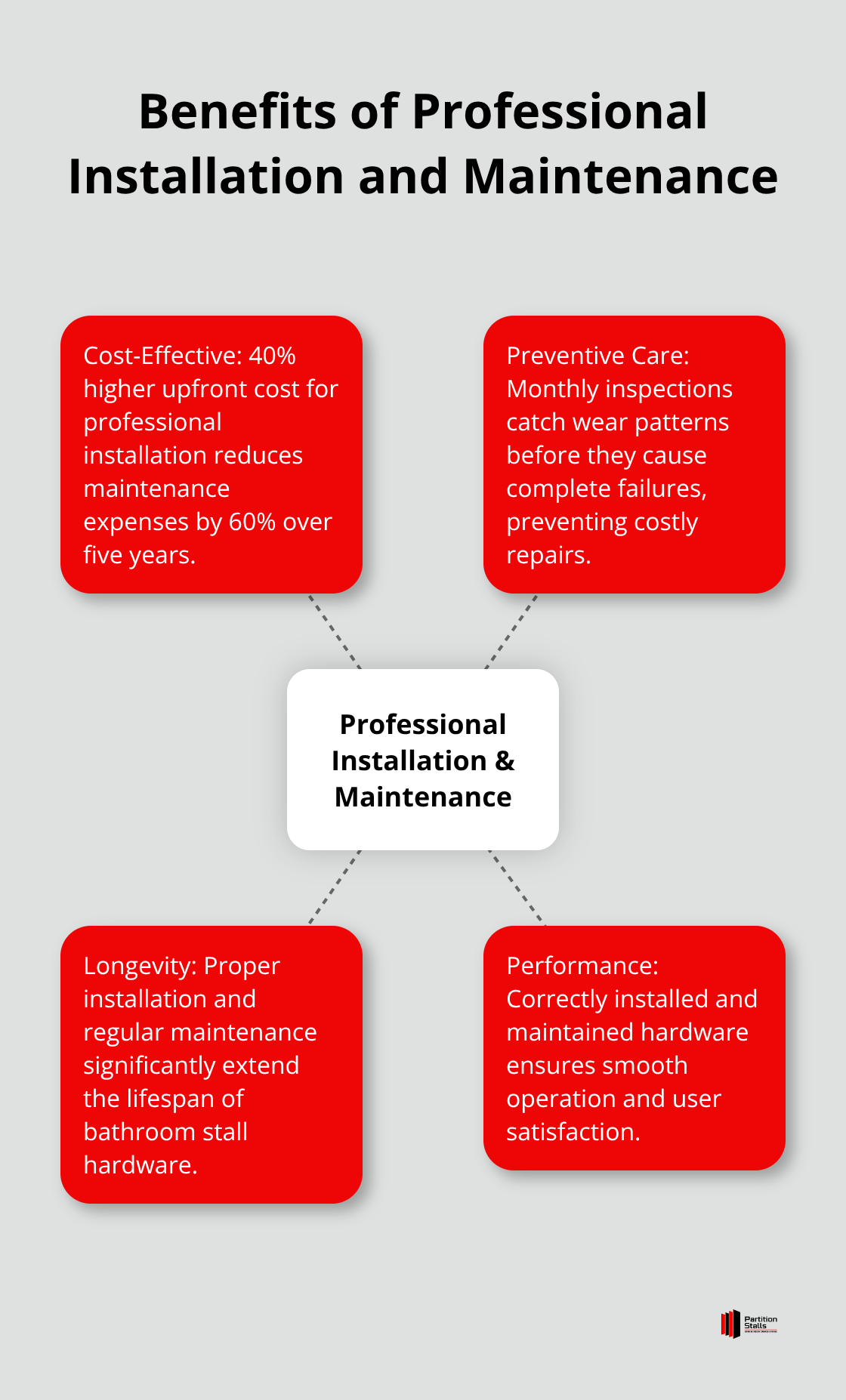
These installation fundamentals directly impact which lock system performs best in your specific facility environment and usage patterns.
Which Lock System Fits Your Facility Best
Heavy-duty hardware becomes non-negotiable when daily usage exceeds 500 cycles per stall. Schools and airports demand cast stainless steel mechanisms that withstand 250,000+ operations without replacement, while lightweight aluminum systems fail within 18 months under similar conditions. Surface-mounted heavy-duty latches distribute force across wider areas, which prevents the stress fractures that plague standard hardware in high-volume environments.
High-Traffic Areas Need Robust Construction
Cast stainless steel latches handle extreme usage patterns that destroy standard hardware within months. Airports report 40% fewer maintenance calls when they upgrade from aluminum to heavy-duty steel mechanisms. The wider mounting base spreads operational stress across more surface area, which eliminates the cracking issues common with lightweight alternatives. Schools see hardware lifespans increase from 2 years to over 8 years when they select commercial-grade components designed for institutional use.
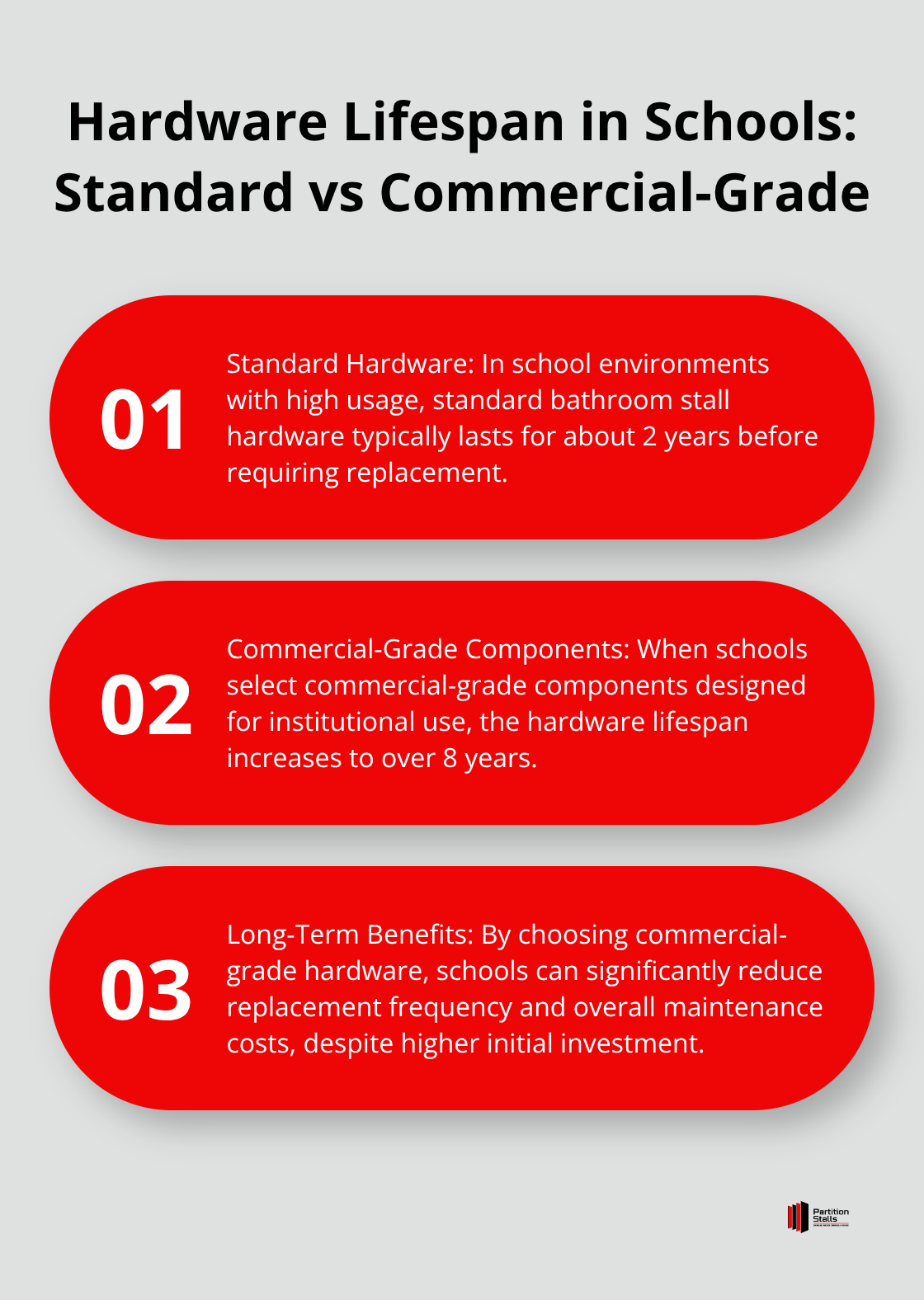
ADA Standards Dictate Hardware Specifications
Accessible stalls must accommodate wheelchair users with turning space requirements, which limits latch placement to specific zones on partition doors. The Americans with Disabilities Act mandates that privacy latches operate with maximum 5-pound force (ruling out many standard slide bolt systems that require 8-12 pounds of pressure). Grab bars must withstand 250-pound loads without rotation, which affects hardware selection for adjacent latch mechanisms. Strike plates need precise positioning 32-34 inches from floor level to comply with reach range standards.
Environmental Conditions Control Material Selection
Stainless steel grade 304 is vulnerable to chlorides and sodium hypochlorite found in commercial cleaning products, while chrome-plated options show pitting within two years under identical conditions. Coastal facilities require marine-grade 316 stainless steel due to salt air corrosion that destroys standard hardware in 12-18 months. Pool areas and locker rooms need non-ferrous materials exclusively, as iron-based components rust completely within six months of installation. Temperature fluctuations above 40 degrees daily cause aluminum components to develop stress cracks that compromise security.
Final Thoughts
Bathroom stall slide latch and toilet partition locks demand careful selection based on your facility’s specific requirements. Slide bolt latches excel in high-traffic environments with proven durability and cost-effectiveness. Turn button systems deliver superior privacy control for professional settings, while magnetic latches provide touchless operation that meets modern hygiene standards.
Professional installation prevents 85% of premature failures and proper maintenance extends hardware lifespan significantly. Cast stainless steel construction outperforms aluminum alternatives in demanding applications. ADA compliance mandates specific force requirements and positioning standards that affect hardware selection (with maximum 5-pound operation force required for accessible stalls).
Environmental factors like moisture, cleaning chemicals, and temperature fluctuations determine optimal material choices. Marine-grade stainless steel becomes necessary in coastal locations where standard grades fail rapidly. We at Partition Stalls help facilities select hardware that matches their unique requirements and usage patterns through our commercial restroom solutions.

